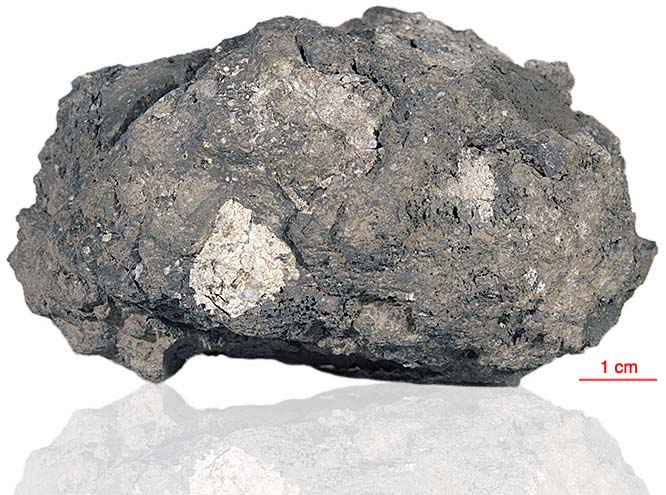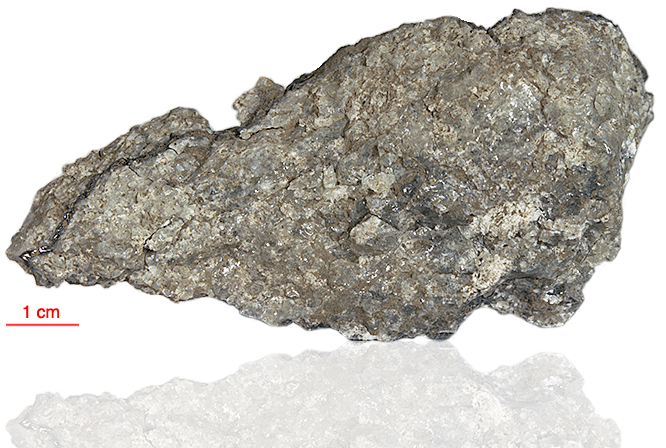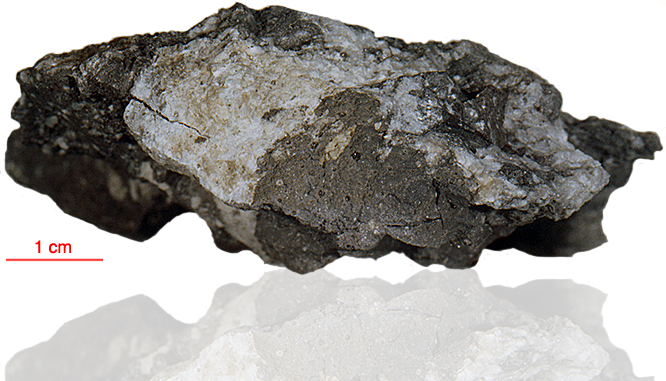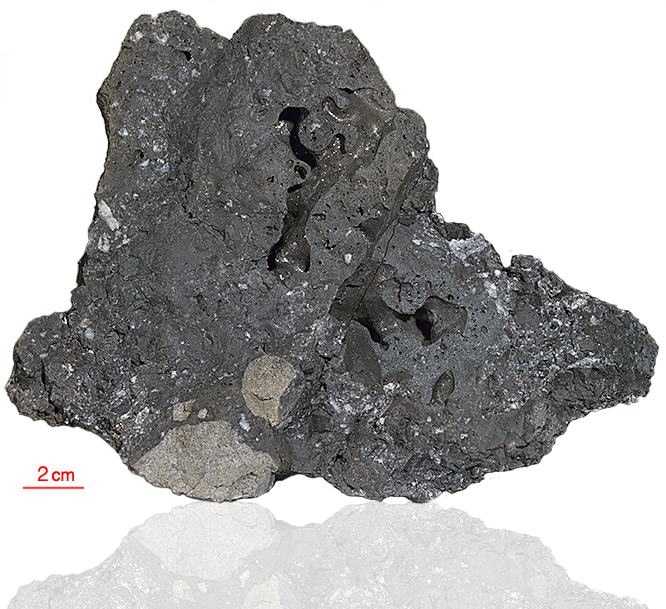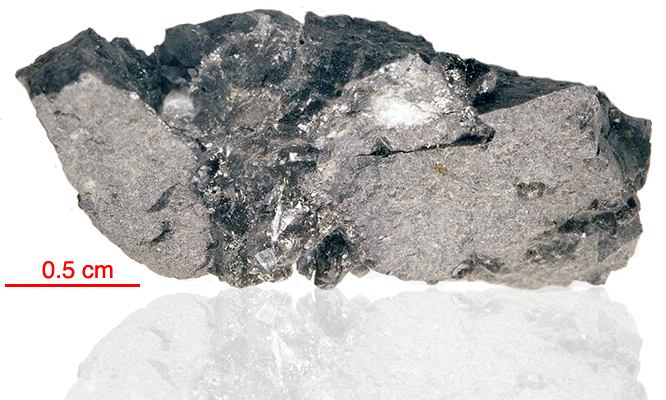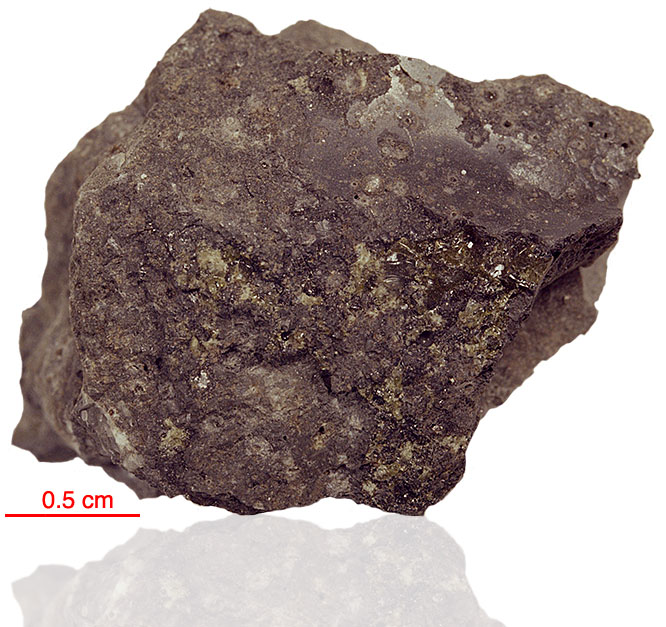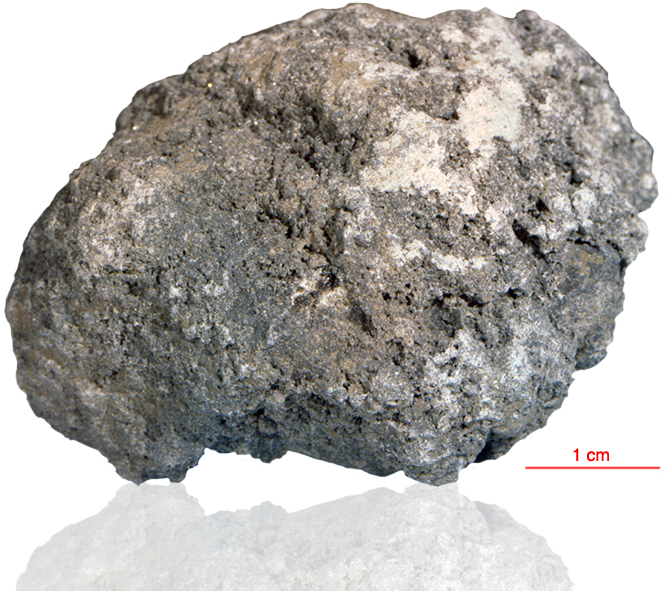
Fact sheet
60636 is a KREEP breccia that was collected as a rake sample near the Lunar Module. Our thin section shows two lithologies, one grey and with visible clasts of plagioclase, the second brown and much finer grained (devitrified glass?). Troilite and metallic iron are relatively common (but minor) constituents in the coarser lithology.
The sample weighed 35.7 grams before analysis and has been dated at 3.94 billion years by the U-Th-Pb method.
Further details of this and other Apollo samples are here: http://curator.jsc.nasa.gov/lunar/
Our thin section image shows a sequence of numbers (1-5) that have been scribed on the glass behind the five rock fragments. In places the thin section is thick so between crossed polars some plagioclase crystals are yellow instead of shades of grey.
[KREEP is an acronym built from the letters K (the atomic symbol for potassium), REE (Rare Earth Elements) and P (for phosphorus). It is a geochemical component of some lunar impact breccia and basaltic rocks]
The Apollo 16 landing site was in the hilly region around Descartes crater in the lunar highlands. The landing spot was chosen to allow the astronauts to gather geologically older lunar material (Descartes Formation and the Cayley Formation) than the samples obtained in the first four landings, which were in or near lunar maria.
The mission lasted 11.1 days, with a stay on the lunar surface of 71 hours. The crew were on the lunar surface for 20.2 hours during which they traversed approximately 27 kilometers and collected approximately 96 kilograms of samples.
Apollo 16 was launched on 16 April 1972.

